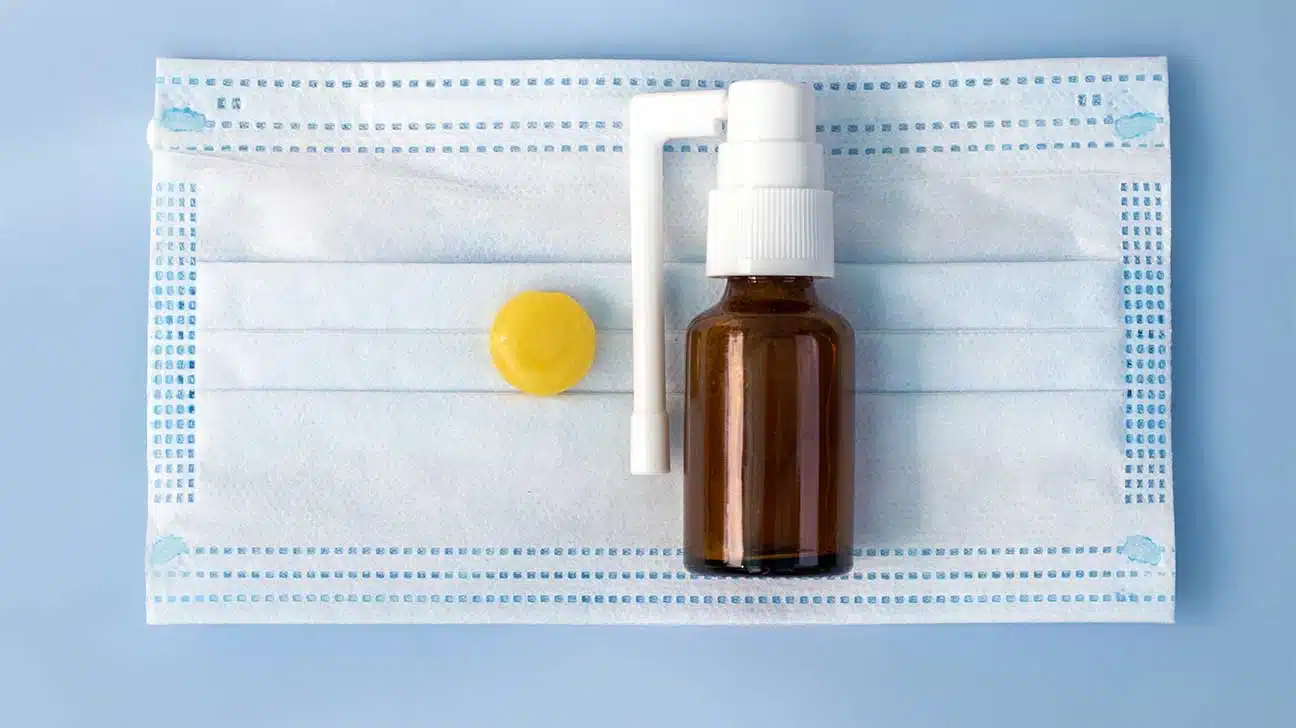
Fentanyl is a strong synthetic opioid medication prescribed for pain relief.
Fentanyl is 50 to 100 times stronger than morphine and carries a high risk of overdose. It should only be used under strict doctor supervision.
Fentanyl appears in multiple forms, including fentanyl patches and sublingual tablets.
One type of fentanyl is Actiq, the brand name for fentanyl citrate lozenges. These lozenges have stick applicators and are sometimes referred to as “fentanyl lollipops.”
Pharmaceutical Uses Of Fentanyl
Due to its high potency, and the potential for fentanyl addiction, fentanyl is not typically the first analgesic (painkiller) that doctors prescribe to their patients.
It is usually used for post-surgery pain, cancer-related pain, and severe pain that has become resistant to other opioid medications.
Fentanyl lollipops in particular are intended for severe cancer pain.
The Benefits Of A Fentanyl Oral Lozenge
Fentanyl lozenges offer specific benefits for patients who deal with breakthrough pain, or pain that flares in spite of daily opioid therapy.
Fast-Acting
Chronic pain, especially breakthrough cancer pain, can be intense and debilitating.
For this type of pain, medication in pill form may not provide adequate relief, especially if the person has developed a tolerance to opioids such as oxycodone.
Pills must pass through the digestive system before they can be absorbed into the bloodstream, which means that they may not reach their peak until an hour after consumption.
Fentanyl lollipops, however, do not have to pass through the digestive system before they begin to work. As a result, they can provide pain relief within minutes.
Duration
According to the National Cancer Institute, most episodes of breakthrough cancer pain last for a short amount of time.
Fentanyl lozenges, which are consumed over a period of 15 minutes, should provide pain relief for the duration of the flare-up.
How Do Fentanyl Lollipops Work?
Fentanyl lollipops are absorbed through the oral mucosa as the person moves the lozenge along the gums and lining of the cheeks.
Like other opioids, fentanyl lollipops work by interacting with the body’s opioid receptors, which are found in various parts of the central nervous system.
When an opioid attaches to these receptors, the interaction blocks pain signals, providing relief.
Common Uses For Fentanyl Lollipops
Fentanyl lollipops are prescribed for cancer patients who are on an around-the-clock opioid regimen and still experience episodes of breakthrough pain.
Patients may experience breakthrough pain after developing a tolerance to other opioids.
When the body develops a tolerance, the person will need higher doses to experience the same amount of relief.
Fentanyl lollipops can provide pain relief when other medications no longer have the potency that the person needs.
Routes Of Administration For Illicit Fentanyl Use
In addition to fentanyl lollipops, different forms of fentanyl may be prescribed for pain relief. Some types of fentanyl are only available on the illicit drug market.
Pressed Pill
Fentanyl is relatively cheap and easy to replicate in illegal labs. Street fentanyl usually appears as a powder that has been pressed into pill form.
Often, fentanyl pills are disguised and sold as other drugs, including other opioids, as the effects of fentanyl can heighten the impact of these drugs.
These pills are especially dangerous because they can quickly cause a fentanyl overdose.
Intravenous Injection
Injectable fentanyl is sometimes used in medical settings during and after surgical procedures.
This medication is prescribed for severe surgical pain and should only be used under direct doctor supervision.
Transdermal Patch
Transdermal fentanyl, also called Duragesic, is a patch that can be applied to the skin and worn for up to 24 hours.
Similar to fentanyl lollipops, fentanyl patches are intended for patients who have developed a tolerance to daily opioid use.
Oral Lozenge (Lollipop)
The oral lozenge form of fentanyl is prescribed by mail-order pharmacies and provided in medical care settings.
It has varying dose sizes and should be titrated until it provides the pain relief the person needs.
The Effects Of A Fentanyl Lollipop
When people take fentanyl lollipops as prescribed for cancer pain, the medication blocks pain signals quickly.
Fentanyl lollipops may also be abused to achieve euphoria. A range of other physical and psychological fentanyl side effects may result from using this drug.
Psychological Effects
Fentanyl lollipops can create an intense rush for people who use them for non-medical purposes. It can also lead to mental health side effects.
Some of the psychological side effects of fentanyl include:
- anxiety
- depression
- a false sense of security
- unusual thought patterns
- unusual dreams
- confusion
- agitation
- hallucinations
Physical Effects
Fentanyl lollipops may also cause physical side effects.
Some of the physical side effects of fentanyl include:
- changes in heart rate and blood pressure
- drowsiness and sedation
- insomnia
- stomach pain
- weight changes
- difficulty urinating
- constipation
- vision changes
- shaking
- swelling
- respiratory depression (slowed or stopped breathing)
- withdrawal symptoms when not taking the drug
The Risk Of Overdose With Fentanyl Lollipops
Because fentanyl is stronger than other opioids, it creates a high risk of opioid overdose in people who have not developed a tolerance to opioids.
Overdose Symptoms
In people who do not have a tolerance to opioids, fentanyl can cause an overdose quickly. In fact, as little as two micrograms of fentanyl can be fatal to some people.
Fentanyl lollipops may carry an especially high risk of overdose due to their fast-acting nature.
Signs of a fentanyl overdose include:
- altered pupil size
- cold, clammy, or blue skin
- confusion
- unresponsiveness
- coma
- respiratory depression
Responding To An Overdose
If you suspect that somebody is experiencing an opioid overdose, call 911 immediately and follow the instructions of the emergency personnel.
If you carry naloxone, administer the medication according to product guidelines.
Naloxone is available as a nasal spray and as an injection, and it can reverse the effects of an opioid overdose.
Emergency services should still be contacted even if the person wakes up after naloxone administration. The effects of this medication are temporary.
You can also apply other first aid measures if you have been trained to do so.
Getting Help For A Fentanyl Addiction
Fentanyl addiction is a difficult and often fatal disorder, but opioid use disorders are treatable. Several treatment options are available to help people begin their recovery.
Supervised Detoxification
Medically supervised detoxification (detox) is very important in recovery from fentanyl abuse.
Stopping fentanyl cold turkey can result in dangerous withdrawal symptoms, including vomiting and diarrhea, that may be life-threatening.
Medical detox provides a safe environment where people can taper off of fentanyl slowly.
Somebody who has become tolerant to high doses of fentanyl may be prescribed a different, long-acting opioid that can ease withdrawal symptoms by leaving the body gradually.
The person can then take smaller and smaller amounts of the drug until they have tapered off of opioids completely.
Inpatient Treatment
After detox, many people attend inpatient addiction treatment. In inpatient rehab centers, people participate in different therapies while receiving support as they recover.
Inpatient treatment provides room and board during the treatment process, and people generally stay for a period of 30 to 90 days or longer, depending on their needs.
Outpatient Treatment
Outpatient treatment provides an option for people who want to begin their recovery from home.
Intensive outpatient programs (IOP) and partial hospitalization programs (PHP) provide the same types of therapy that a person may receive during an inpatient stay.
Long-term options such as weekly therapy can help people maintain their recovery over time.
FAQs For Fentanyl Lollipops
Fentanyl lollipops are a powerful drug, and many people have questions about them. Here you’ll find some of the most common questions about fentanyl lozenges.
What Is The Strongest Pain Medication?
Research shows mixed results about the relative strength of different pain medications.
However, opioids are an objectively powerful pain relief drug, and fentanyl is one of the strongest opioids available.
Are Fentanyl Lollipops Sold Illegally?
Fentanyl lollipops are sometimes sold illegally, but it is far more common for street fentanyl to be sold in powder and pill form.
Can You Chew A Fentanyl Lollipop?
Fentanyl lollipops should not be chewed. People taking fentanyl lollipops for pain should suck on the lozenge over a period of 15 minutes.
Any deviation from the intended use of fentanyl lollipops may result in a fatal overdose or other serious complications.
Can Fentanyl Lollipops Cause Addiction?
Fentanyl lollipops can cause psychological dependence and addiction. They should only be used by cancer patients who experience breakthrough pain.
Can You Overdose On A Fentanyl Lollipop?
Yes, it is possible to overdose on a fentanyl lollipop, as fentanyl is stronger than other opioid medications.
This medication should never be used by somebody who has not developed a tolerance to around-the-clock opioid use.
Find Substance Use Treatment Today
Finding the right treatment program for fentanyl addiction can be overwhelming, but help is available to connect you to the best options for your needs.
If you or a loved one want to overcome drug abuse, contact our helpline for more information on rehab centers that may work for you.
Addiction Resource aims to provide only the most current, accurate information in regards to addiction and addiction treatment, which means we only reference the most credible sources available.
These include peer-reviewed journals, government entities and academic institutions, and leaders in addiction healthcare and advocacy. Learn more about how we safeguard our content by viewing our editorial policy.
- Centers For Disease Control And Prevention (CDC)
https://www.cdc.gov/niosh/topics/opioids/response.html - Medlineplus.gov
https://medlineplus.gov/druginfo/meds/a605043.html#side-effects - National Institute On Drug Abuse (NIDA)
https://nida.nih.gov/publications/drugfacts/naloxone - National Library Of Medicine
https://pubmed.ncbi.nlm.nih.gov/16083461/ - United States Drug Enforcement Administration (DEA)
https://www.dea.gov/sites/default/files/2020-06/Fentanyl-2020_0.pdf - United States Food And Drug Administration (FDA)
https://www.accessdata.fda.gov/drugsatfda_docs/label/2011/020747s033lbl.pdf


